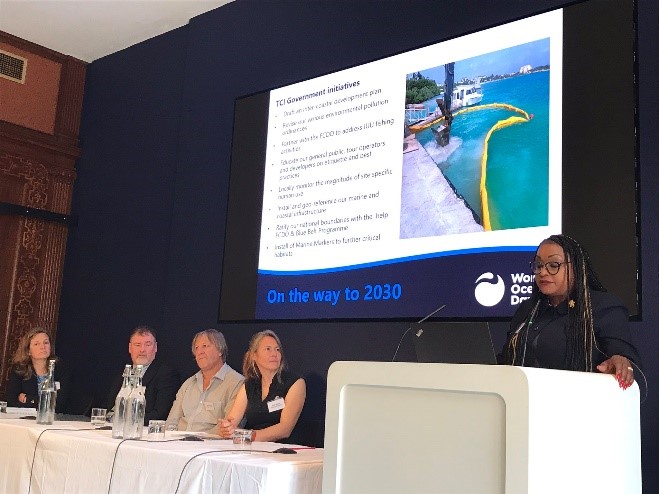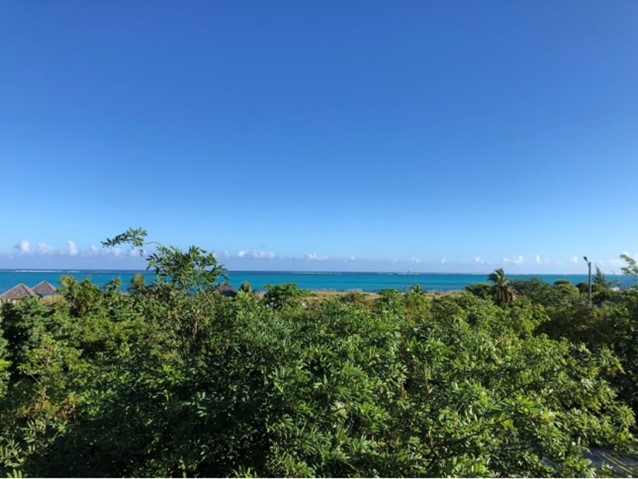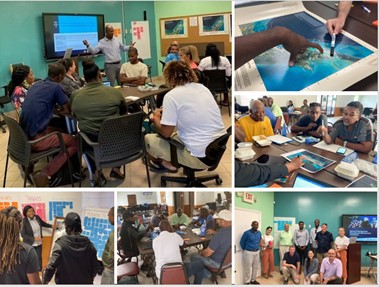The Turks and Caicos Islands (TCI) are a tropical Atlantic archipelago located 575 miles southeast of Miami, Florida, and 75 miles north of the Dominican Republic. There are approximately 100 named islands and cays, 9 of which are populated. TCI is known for being incredibly biodiverse and is home to a range of habitats including mangroves, tidal flats, marshlands and coral reefs, including the third largest barrier reef in the world.

TCI-BB partnership
TCI officially joined the Blue Belt Programme on World Oceans Day, 8th June 2022. One of the key areas of assistance under the programme is marine protected area (MPA) management. Once a MPA has been designated, it is important to understand how well the protected area is being managed. TCI has a network of 27 Marine Protected Areas (MPAs) that were designated in the 1980s. Protected areas are split into national parks, nature reserves, sanctuaries, and areas of historic interest with each having varying types and levels of protection.

Introduction to PAME
Protected Area Management Effectiveness (PAME) evaluations are a globally recognised tool that enable us to 1) measure and understand the impact of management actions 2) track progress towards achievement of an MPA’s goals and objectives 3) help MPA managers to document achievements and define and agree actions needed to improve management. Additionally, a PAME evaluation can help to build support and trust by sharing information about management achievements with the community and other stakeholders. International reporting on the management of protected areas is also becoming increasingly common. For example, PAME is embedded within the Convention on Biological Diversity (CBD) and contracting parties are required to report on it.
PAME evaluations are completed through a series of facilitated meetings and workshops with a range of stakeholders and require participants to answer a series of questions. Participants can identify what actions are needed in order to improve management.
PAME in TCI
During a recent technical visit, led by the TCI’s Department of Environment and Coastal Resources (DECR) and building on PAME training that we had delivered remotely, my colleague Marianne and I engaged stakeholders across multiple sectors in a series of workshops to evaluate the management effectiveness of three protected areas.

Princess Alexandra Land and Sea National Park Located off the Northern and Eastern coasts of Providenciales, covering an area of 26.61km2 and also encompassing Princess Alexandra Nature Reserve. The park covers a large portion of the Northern barrier reef of Providenciales. Other habitats include mangroves and seagrass beds, and specific species of interest include the Turks and Caicos Islands rock iguana and ospreys.
West Caicos Marine National Park Covers an area of 3.97km2 along the West coast of the uninhabited island of West Caicos. Characterised by coral reefs and renowned for its impressive wall diving.
Columbus Landfall Marine National Park The largest protected area on the island of Grand Turk, covering 5.18km2. It covers the entirety of the island’s west coast beaches to the high tide mark, the west coast barrier reef, and extends upwards North of the island.
We spoke with water sports operators, diving and snorkelling operators, wildlife watching tour operators, business owners, hoteliers, NGOs, fishing cooperatives and various departments within the Turks and Caicos Islands Government. We really enjoyed meeting so many different people and hearing their thoughts on TCIs MPAs and how they should be managed going forward!

Kateesha Clarke, Environmental Officer, DECR commented: "Stakeholders were thoroughly engaged in the workshops and provided varied responses to questions due to differing levels of involvement, use and interaction with the protected areas. It was both interesting and informative as we explored the vulnerability and ecological importance of the protected areas and discussed potential actions to mitigate threats. The workshops were well received and provided a platform to discuss the challenges of protected area management in TCI and opportunities for improvement, and I am looking forward to the outcome."
Next steps
Actions identified through the PAME evaluations will be used to inform the development of site level management plans and will feed into the development of a national management framework for TCI. PAME evaluations will be repeated for the sites every few years, to ensure adaptive management. Going forward, we will continue to work with the DECR to consider how this process can be expanded to all MPAs across TCI.
Leave a comment